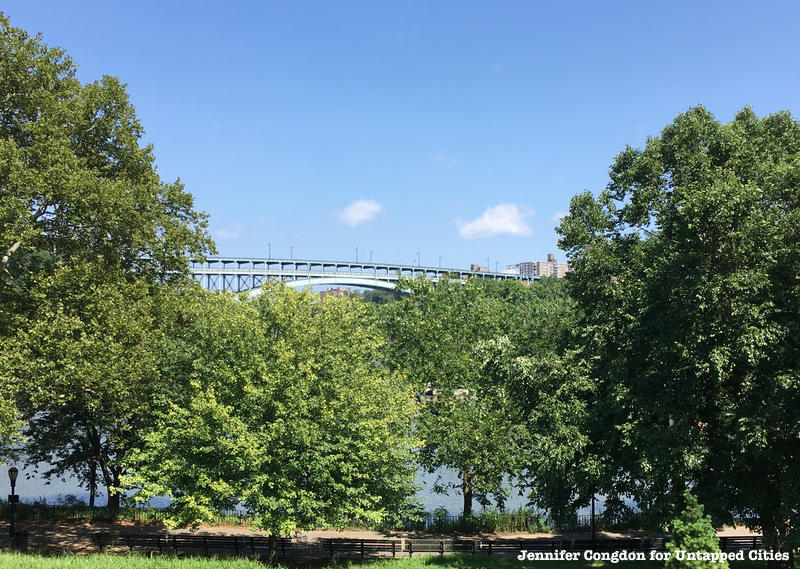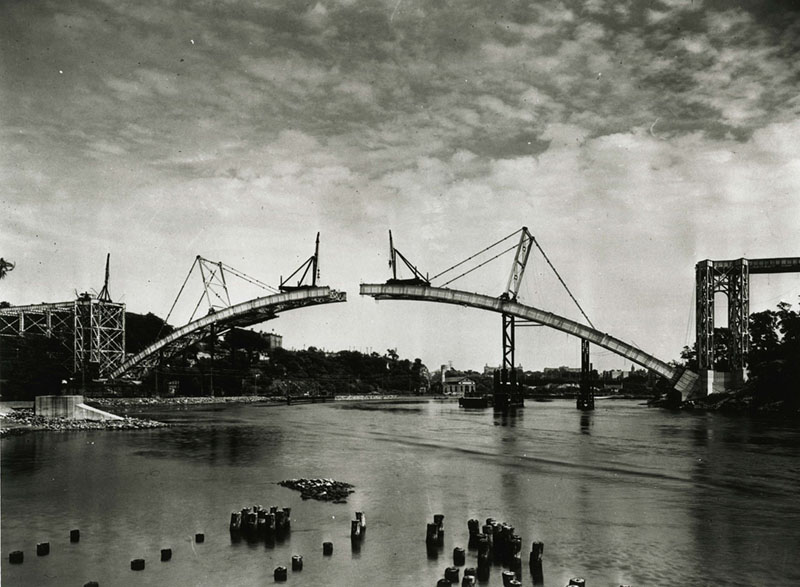
Designed by David B. Steinman and built as part of the Henry Hudson Parkway, the Henry Hudson Bridge was opened in 1936 to help alleviate congestion on the nearby Broadway Bridge. The steel arch toll span — named in honor of Henry Hudson’s voyage on the Half Moon, which was anchored near the site in 1609 — connects the Bronx with northern Manhattan, and spans the Spuyten Duyvil Creek.
Though not nearly spoken as much of as New York City’s other bridges, the Henry Hudson Bridge is a commanding city fixture, which harbors years of history. Here, we take a look at some of its most fascinating secrets, ranging from its construction to other little known engineering facts.
1. The Henry Hudson Bridge Was Originally Only One Level
 The Henry Hudson Bridge being constructed. Image via Wikimedia Commons: MTA
The Henry Hudson Bridge being constructed. Image via Wikimedia Commons: MTA
Today, over 60,000 cars utilize the Henry Hudson Bridge on a daily basis. However, it wasn’t initially intended to be a major thoroughfare. According to MTA Bridges and Tunnels President, Jim Ferrara, “The Henry Hudson was originally designed for leisurely weekend drives, but through the decades (it) has evolved into a vital transportation connection in the tri-state region.”
When it opened to traffic on December 12, 1936, the bridge was a single-deck structure that cost $4,949,000 to construct. At the time, master builder Robert Moses had planned for the span to be one level, but left the option to construct a second deck should traffic increase. This was to ensure that project would be more financeable. Eventually, an additional level was indeed needed: it opened to traffic on May 7, 1938, and cost approximately $2 million to build, funded by increasing toll revenue on the bridge. Northbound traffic flowed on the upper level while the original (lower) level carried southbound traffic. See photo of the bridge when it was only a single deck.





